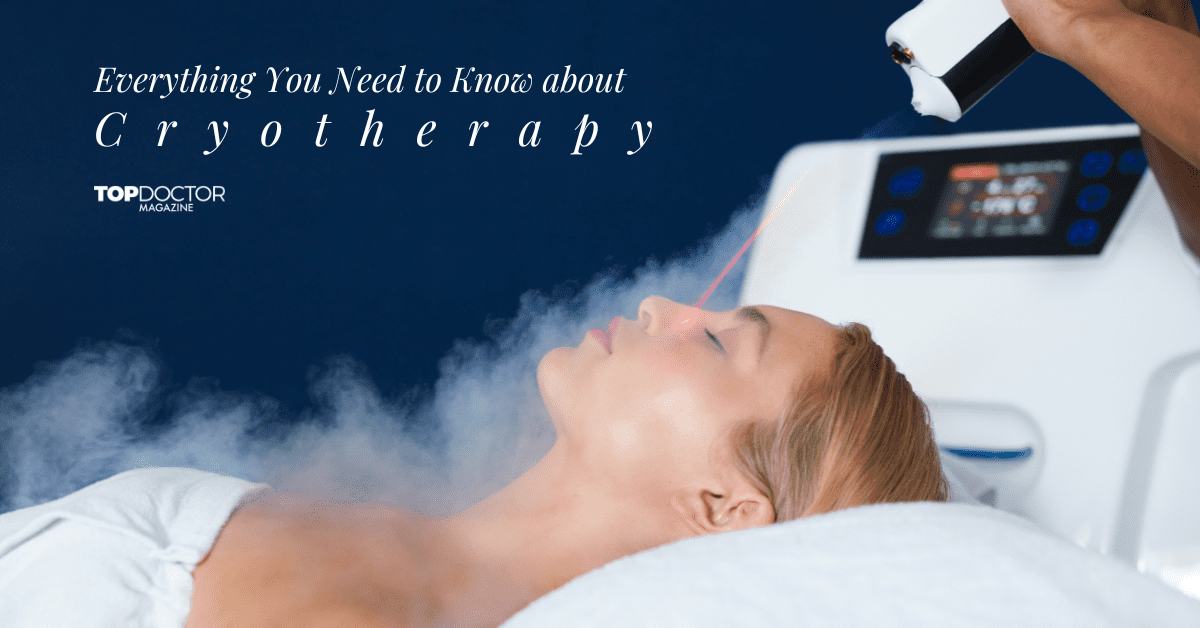Cryotherapy or cryogenic therapy uses extreme cold as a means of treatment for various ailments. Liquid nitrogen and argon gas are just a few examples of some controlled cold mediums that cryotherapy uses to apply on affected areas that call for treatment.
In typical cases, cryotherapy treats skin conditions like dermatitis or warts. Localized applications via ice packs, ice baths, coolant sprays and cryotherapy facials are used to remove blemishes and treat these skin conditions.
You can also use cryotherapy to remedy more severe cases like skin cancer because cryotherapy can remove abnormal cells through minimally invasive procedures such as cryoablation or cryosurgery. Surgical application of liquid nitrogen into affected areas can assist in the removal of cancerous cells or tumors.
What Are the Benefits of Cryotherapy?
Pain Alleviation
Cryotherapy (in the form of local applications) can treat pain in targeted areas from migraines, muscle soreness and nerve irritations. For example, applying an ice pack is a cryotherapy form known to every athlete. Whether you might have a sore muscle, a sprain or an injury, the immediate first aid often comes in the form of an ice pack.
It has been observed that cryotherapy can also alleviate migraines. Research shows that putting a cold compress onto the carotid arteries on the neck decreases migraine’s debilitating effects. Additionally, empirical evidence points out that whole body cryotherapy soothes arthritic pains.
Cryotherapy is also used in the treatment of nerve-related pains. Cryotherapy can treat pinched nerves, acute injuries and chronic pains through medically administering small incisions and using a probe to freeze the affected tissue. The process is efficient because freezing temperatures tend to numb nerves and the corresponding pain in the process.
Treatment of Mood Disorders
The use of whole-body cryotherapy may sound unusual in treating mood disorders. However, studies have observed that patients suffering from depression and anxiety disorders have improved moods after whole-body cryotherapy sessions.
The use of cryotherapy to induce a more natural release of hormones such as norepinephrine, adrenaline and endorphins is highly supplemental in treating mood disorders. The same studies posit that cryotherapy should be used as a supplemental addition to the psychiatric treatment of mood disorders and regular counseling.
Treatment of Low-Risk Tumors and Growths
As mentioned earlier, cryotherapy can be used in the treatment of tumors. It has been found that by targeting specific areas, cryosurgery or cryoablation can be used as a direct treatment for prostate, skin and cervical cancers.
The abnormal cells are frozen and killed off by inserting a cryoprobe into specific target spots. Some treatments require multiple sessions of cryotherapy.
Treatment of Skin Conditions
Cryotherapy can also eliminate benign skin lesions, blemishes and other skin conditions. These common skin problems can be fixed simply through spray or spot freeze techniques.
Cryotherapy and cryosurgery work by freezing and treating inflammation in the treatment areas. This process leads to an effective reduction in inflammation and immediate treatment of those skin-related problems.
Potential Risks of Cryotherapy
A few significant symptoms to watch out for are extended numbness or redness in the treated area. While typical during therapy, these sensations should not exceed 24 hours.
Physicians and those experienced with cryogenic therapy treatments know precisely how long one should be exposed to freezing temperatures used in the therapy. As a rule of thumb, cryotherapy sessions should not exceed four minutes in any specific area.
A Parting Reminder
Cryotherapy has improved the quality of life for many individuals, ranging from professional athletes to those suffering from chronic pain. And while there is enough medical and empirical data to back the effectiveness of cryotherapy, one form of therapy may not always work out for everyone. Before undergoing any cryotherapy, make sure you consult with your physician so they may recommend the best kind of treatment for you.






0 Comments